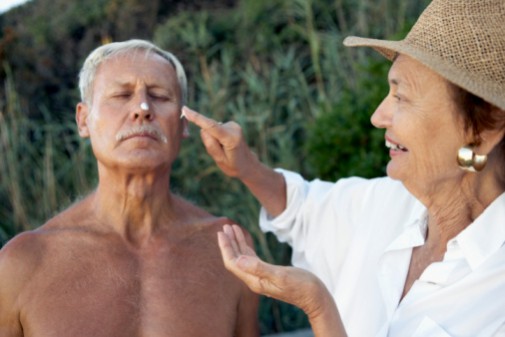Men more likely to die of skin cancer

While there’s little difference between men and women in the number of skin cancer cases each year, men are more likely to die of the disease, according to British researchers.
Data collected by Cancer Research UK shows that of the 6,200 men who develop melanoma each year, 1,300 die from the disease, compared with 900 of the 6,600 women. The likelihood of getting the disease is similar between the sexes with 17.2 men per 100,000 diagnosed compared with 17.3 women.
One reason for the disparity is that men are more likely to be diagnosed with melanoma, the deadliest form of skin cancer, when the disease is at a more advanced stage, said Professor Julia Newton-Bishop, Cancer Research UK dermatologist based at the University of Leeds, in a news release.
“But there also seems to be strong biological reasons behind the differences, and we’re working on research to better understand why men and women’s bodies deal with their melanomas in different ways,” she added.
Malignant melanoma death rates have been increasing in the United Kingdom since the early 1970s, largely because more people are developing the disease, researchers found.
According to 2011 data, male incidence rates are now more than five times higher than they were 30 years ago, rising from 2.7 per 100,000 to 17.2 per 100,000. Experts expect that trend to continue, and the gap between deaths in men and women to widen.
Men and women tend to develop melanoma in different places, says Dr. Martha Arroyo, dermatologist on staff at Advocate Condell Medical Center in Libertyville, Ill. Melanoma is more likely to appear on the back and chest for men, where it’s harder to spot. Women are more likely to develop melanoma on the arms and legs, she says.
Risk factors for melanoma include fair skin that burns easily; lots of moles or freckles; a history of sunburn; light hair or eyes; and a personal or family history of skin cancer, Dr. Arroyo says.
Skin cancer is preventable and treatable, she says. “Everyone should use sunscreen, hats and sun protective clothing,” Dr. Arroyo adds. “Avoid peek sun exposure from 11 am – 3 pm, and don’t use tanning beds.”
Dr. Arroyo recommends that if you notice a changing lesion or a non-healing lesion, see your doctor for evaluation.
Related Posts
Comments
About the Author
health enews staff is a group of experienced writers from our Advocate Health Care and Aurora Health Care sites, which also includes freelance or intern writers.

















